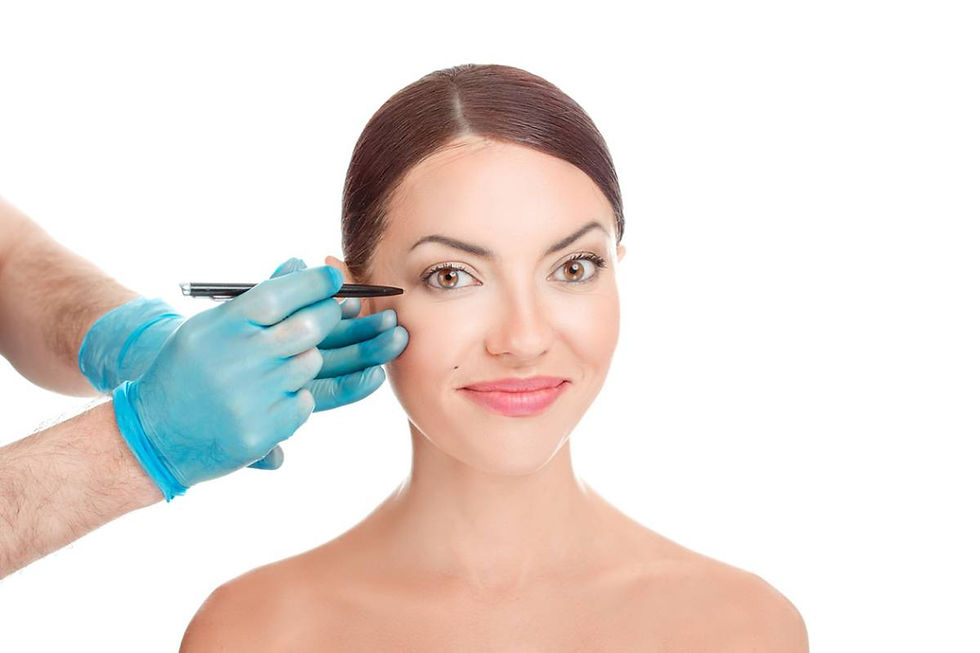How Does Rhinoplasty Impact Facial Balance?
- Dynamic Aesthetic
- Oct 9
- 3 min read
Facial harmony is often defined by the way different features complement one another. The nose, being at the center of the face, naturally draws attention and plays a major role in overall symmetry. Even slight changes in its shape can transform how other features are perceived. Many individuals consider cosmetic improvements to enhance their appearance and boost confidence. In recent years, procedures such as Rhinoplasty Dubai have become more sought after because of their ability to refine facial balance without necessarily drawing attention solely to the nose itself.
Understanding the Concept of Facial Balance
Facial balance is not about perfection—it is about proportionality. When one feature overshadows the others, the overall harmony of the face can feel disrupted. For example:
A large nose may make the chin or forehead appear smaller.
A very narrow nose might emphasize the width of the cheeks.
Slight asymmetry can make the eyes or lips appear uneven.
The Nose as a Central Feature
The nose occupies a unique position—it connects the upper, middle, and lower parts of the face. This central placement means that even subtle changes to its size, width, or angle can influence the way the eyes, lips, and jawline are perceived. A refined nose often creates the impression of improved balance even without modifying other features. For example, adjusting the nasal bridge may reduce the attention it draws, allowing the eyes to become a focal point. Similarly, refining the nasal tip can create smoother alignment with the cheeks and lips, producing a harmonious look.
How Rhinoplasty Impacts Perception of Other Features
Rhinoplasty does not only change the nose—it shifts the way other features are perceived in relation to it. Some common effects include:
Eyes appear brighter: When the nose is in proportion, the eyes become more prominent.
Jawline looks defined: A balanced nose can give the illusion of a sharper or stronger chin without altering the jaw itself.
Cheeks stand out more: Reducing or refining the nose allows cheek contours to appear fuller and better shaped.
Nose and Chin Relationship
The relationship between the nose and chin is one of the most influential aspects of facial aesthetics. If the nose is too prominent, the chin may look recessed or weak. On the other hand, if the nose is smaller and refined, the chin appears more in proportion, creating a balanced profile. This complementary effect highlights how enhancing one feature can improve the harmony of another without direct alteration.
The Role of Symmetry in Attractiveness
While perfect symmetry is rare in nature, balanced proportions are universally associated with attractiveness. A nose that complements the natural lines of the face enhances perceived symmetry. Even if slight asymmetry exists in the eyes, lips, or cheeks, a well-balanced nose can draw attention away from those irregularities, making the overall appearance seem more harmonious.
Gender Differences in Facial Balance
Facial balance is often viewed differently in men and women.
For men: A stronger, straighter nasal bridge may enhance masculinity and define the profile.
For women: A softer, slightly refined nose can highlight feminine features such as the lips and eyes.
Cultural Perspectives on Facial Balance
Different cultures view facial harmony differently. In some societies, sharper nasal features are associated with strength, while in others, a softer appearance is seen as more attractive. Rhinoplasty allows individuals to enhance their natural beauty while still preserving ethnic identity and cultural traits. This balance is essential, as facial harmony should never come at the cost of individuality.
Why the Nose Affects First Impressions
The human brain is wired to notice faces first, and within that, the eyes and nose stand out immediately. Because the nose is central, it influences how balanced the face looks at first glance. Even small adjustments can affect how others perceive someone during conversations, photographs, or casual encounters. Balanced facial features often give the impression of approachability, confidence, and health.
The Connection Between Nose and Balance
The nose is central to overall harmony and symmetry.
Subtle changes can influence the perception of surrounding features.
Balance enhances natural beauty rather than altering identity.
Improved proportions often boost confidence and self-image.
Conclusion
Facial balance is one of the most important aspects of aesthetics, and the nose plays a defining role in shaping that harmony. When the nose aligns proportionally with the rest of the features, the entire face appears more attractive, confident, and naturally pleasing. People often seek enhancement not to change who they are, but to highlight their best qualities and achieve harmony among their features. For those who value the importance of facial balance, expert guidance from trusted professionals—such as the team at Dynamic Life Clinic—can help in understanding how subtle refinements to the nose can positively influence overall appearance.




Comments